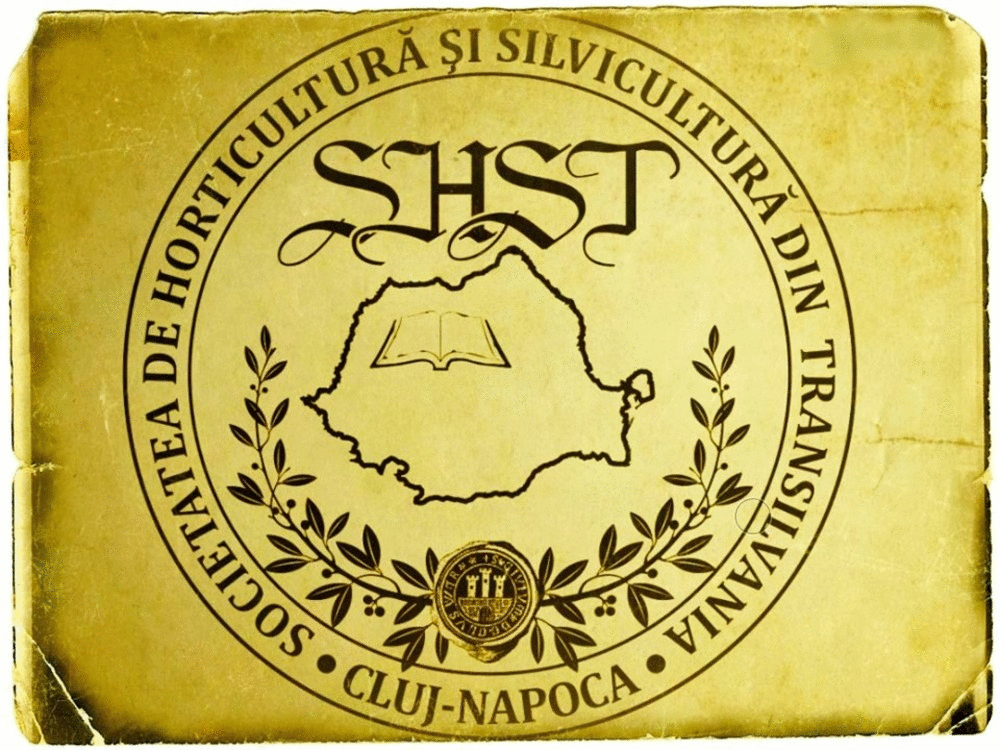FTIR analysis and study of some physicochemical parameters and antioxidant activity of Opuntia ficus indica seed oil from Tebessa region, Algeria
DOI:
https://doi.org/10.55779/nsb15111345Keywords:
antioxidant activity, FTIR, Opuntia ficus indica, physicochemical characteristics, seed oilAbstract
Opuntia ficus-indica is well-known in Algeria for its nutritional and therapeutic properties. Our study aims to determine the physicochemical properties, the functional groups and the antioxidant activity of cactus seed oil and thus contribute to the valorization of seeds. The extraction of prickly pear seed oil with cold-press provided a yield of 4.26± 0.93%. The evaluation of the its physicochemical parameters by the norms of AFNOR yielded the following results: density: 0.908± 0.00030 kg/dm; RI: 1.4714±0,00010; AV: 1.4± 0.09 mg KOH/g; IV: 114.08± 0.67 g I 2 /100 g; SV: 188.94± 0.58 mg KOH / g; ES: 187.54±0.49 mg KOH/g; PV: 1.56 g O2 /g; chlorophyll number: 1.076 and Carotenoids number: 0.315. FTIR spectrum was used to determine the functional groups and type of associated vibrations in the extract oil, which was scanned in the range (4000-400) cm -1. The FTIR results showed that the oil extract contains fatty acid methyl esters, revealing functional groups with ranges of properties, H- C = O, -(CH2) n -, C-O, C = C and C = O in the spectrum. The analysis of antioxidant activity using DPPH and FRAP methods showed that the OFI seed oil had a significant activity in capturing free radicals (IC50= 0.050 mg/mL), (EC50 = 0.123 mg/mL) respectively. We conclude from this current study that this oil can be used in folk medicine.
Metrics
References
Afnor N (1993). P94-051-Sols : reconnaissance et essais ; Détermination des limites d’Atterberg–Limite de liquidité à la coupelle-Limite de plasticité au rouleau. Association Française de Normalisation, Paris, France.
Aïssi VM, Mohamed MS, Fidèle PT, Dénis K (2009). Etude comparative de la qualité des huiles végétales alimentaires raffinées en usage au Bénin. Bulletin d’Informations de la Société Ouest Africaine de Chimie 6:25-37.
Akbari S, Abdurahman NH, Yunus RM, Alara OR, Abayom OO (2019). Extraction, characterization and antioxidant activity of fenugreek (Trigonella-Foenum Graecum) seed oil. Materials Science for Energy Technologies 2(2):349-355. https://doi.org/10.1016/j.mset.2018.12.001
Ammar I, Bardaa S, Mzid M, Sahnoun Z, Rebaii T, Attia H, Ennouri M (2015). Antioxidant, antibacterial and in vivo dermal wound healing effects of Opuntia flower extracts. International Journal of Biological Macromolecules 81:483-490. https://doi.org/10.1016/j.ijbiomac.2015.08.039
Andreu-Coll L, Noguera-Artiaga L, Carbonell-Barrachina AA, Legua P, Hernández F (2020). Volatile composition of prickly pear fruit pulp from six Spanish cultivars. Journal of Food Science 85(2):358-363. https://doi.org/10.1111/1750-3841.15001
Association of Official Analytical Chemists (AOAC) (1984). Official methods of analyses. Washington, DC: Association of Official Analytical Chemists.
Barba FJ, Putnik P, Kovačević DB, Poojary MM, Roohinejad S, Lorenzo JM, Koubaa M (2017). Impact of conventional and non-conventional processing on prickly pear (Opuntia spp.) and their derived products: From preservation of beverages to valorization of by-products. Trends in Food Science & Technology 67:260-270. https://doi.org/10.1016/j.tifs.2017.07.012
Belhadj Slimen I, Najar T, Abderrabba M (2020). Bioactive compounds of prickly pear [Opuntia ficus-indica (L.) Mill.]. Bioactive Compounds in Underutilized Vegetables and Legumes 1-40. https://doi.org/10.1007/978-3-030-57415-4_12
Benayad Z, Martinez-Villaluenga C, Frias J, Gomez-Cordoves C, Es-Safi NE (2014). Phenolic composition, antioxidant and anti-inflammatory activities of extracts from Moroccan Opuntia ficus-indica flowers obtained by different extraction methods. Industrial Crops and Products 62:412-420. https://doi.org/10.1016/j.indcrop.2014.08.046
Benouchenne D, Bellil I, Akkal S, Bensouici C, Khelifi D (2020). LC–MS/MS analysis, antioxidant and antibacterial activities of Algerian fir (Abies numidica from LANNOY ex CARRIÈRE) ethylacetate fraction extracted from needles. Journal of King Saud University-Science 32(8):3321-3327. https://doi.org/10.1016/j.jksus.2020.09.017
Berraaouan A, Abderrahim Z, Hassane M, Abdelkhaleq L, Mohammed A, Mohamed B (2015). Evaluation of protective effect of cactus pear seed oil (Opuntia ficus-indica L. MILL.) against alloxan-induced diabetes in mice. Asian Pacific Journal of Tropical Medicine 8(7):532-537. https://doi.org/10.1016/j.apjtm.2015.06.013
Bertran E, Blanco M, Coello J, Iturriaga H, Maspoch S, Montoliu I (1999). Determination of olive oil free fatty acid by Fourier transform infrared spectroscopy. Journal of the American Oil Chemists' Society 76(5):611-616. https://doi.org/10.1007/s11746-999-0011-9
Boulfane S, Maata N, Anouar A, Hilali S (2015). Caractérisation physicochimique des huiles d’olive produites dans les huileries traditionnelles de la région de la Chaouia-Maroc. Journal of Applied Biosciences 87:8022-8029. https://doi.org/10.4314/jab.v87i1.5
Cebi N, Taylan O, Abusurrah M, Sagdic O (2020). Detection of orange essential oil, isopropyl myristate, and benzyl alcohol in lemon essential oil by FTIR spectroscopy combined with chemometrics. Foods 10(1):27. https://doi.org/10.3390/foods10010027
Chahdoura H, Barreira JCM, Barros L, Santos-Buelga C, Ferreira ICFR, Achour L (2015). Seeds of Opuntia spp. as a novel high potential by-product: Phytochemical characterization and antioxidant activity. Industrial Crops and Products 65:383-389. https://doi.org/10.1016/j.indcrop.2014.11.011
Chougui N, Djerroud N, Naraoui F, Hadjal S, Aliane K, Zeroual B, Larbat R (2015). Physicochemical properties and storage stability of margarine containing Opuntia ficus-indica peel extract as antioxidant. Food Chemistry 173:382-390. https://doi.org/10.1016/j.foodchem.2014.10.025
Chougui N, Tamendjari A, Hamidj W, Hallal S, Barras A, Richard T, Larbat R (2013). Oil composition and characterisation of phenolic compounds of Opuntia ficus-indica seeds. Food Chemistry 139(1-4):796-803. https://doi.org/10.1016/j.foodchem.2013.01.054
Coates J (2000). Interpretation of infrared spectra. A practical approach in encyclopedia of analytical chemistry. In: Meyers RA (Ed)., pp 10815-10837
De Wit M, Hugo A, Shongwe N. 2017. Quality assessment of seed oil from selected cactus pear cultivars (Opuntia ficus-indica and O. robusta). Journal of Food Processing and Preservation 41(3):e12898. https://doi.org/10.1111/jfpp.12898
De Wit M, Motsamai VK, Hugo A (2021). Cold-pressed cactus pear seed oil: Quality and stability. Grasas y Aceites 72(3):e415-e415. https://doi.org/10.3989/gya.0329201
Dube MA, Zheng S, McLean DD, Kates M (2004). A comparison of attenuated total reflectance‐FTIR spectroscopy and GPC for monitoring biodiesel production. Journal of the American Oil Chemists' Society 81(6):599-603. http://dx.doi.org/10.1007/s11746-006-0948-x
El Mannoubi I, Barrek S, Skanji T, Casabianca H, Zarrouk H (2009). Characterization of Opuntia ficus indica seed oil from Tunisia. Chemistry of Natural Compounds 45(5):616-620. https://doi.org/10.1007/s10600-009-9448-1
El Mostafa K, El Kharrassi Y, Badreddine A, Andreoletti P, Vamecq J, El Kebbaj MS, … Cherkaoui-Malki M (2014) Nopal cactus (Opuntia ficus-indica) as a source of bioactive compounds for nutrition, health and disease. Molecules 19:14879-14901 https://doi.org/10.3390/molecules190914879
Ettalibi F, El Antari A, Gadhi C, Harrak H (2020). Oxidative stability at different storage conditions and adulteration detection of prickly pear seeds oil. Journal of Food Quality 8837090. https://doi.org/10.1155/2020/8837090
Fiad M, El-Masry RAA, Gomaa AM, Awad AE (2020). Evaluation of antioxidant and antimicrobial properties of Opuntia ficus-indica, seeds and peels extracts. Zagazig Journal of Agricultural Research 47(2):587-596. https://dx.doi.org/10.21608/zjar.2020.94497
Gortzi O, Lalas S, Chatzilazarou A, Katsoyannos E, Papaconstandinou S, Dourtoglou E (2008). Recovery of natural antioxidants from olive mill wastewater using genapol-X080. Journal of the American Oil Chemists’ Society 85:133-140. https://doi.org/10.1007/S11746-007-1180-Z
Guillen MD, Cabo N (1997). Characterization of edible oils and lard by Fourier transform infrared spectroscopy. Relationships between composition and frequency of concrete bands in the fingerprint region. Journal of the American Oil Chemists’ Society 74(10):1281-1286. https://doi.org/10.1007/s11746-997-0058-4
Hagen LM, Seibert M, Hagen A, Nyland K, Neill JD, Treyer M, ... Madore BF (2016). On the Classification of UGC 1382 as a giant low surface brightness galaxy. The Astrophysical Journal 826(2):210. http://dx.doi.org/10.3847/0004-637X/826/2/210
Hinneburg I, Dorman HJD, Hiltunen R (2006). Antioxidant activities of extracts from selected culinary herbs and spices. Food Chemistry 97:122-129. https://doi.org/10.1016/j.foodchem.2005.03.028
Hu X, Yue X, Cheng X, Gao S, Min R, Wang H, Tam HY (2021). Large refractive index modulation based on a BDK-doped step-index PMMA optical fiber for highly reflective Bragg grating inscription. Optics Letters 46(12): 2864-2867. https://doi.org/10.1364/OL.427042
Izuegbuna O, Otunola G, Bradley G (2019). Chemical composition, antioxidant, anti-inflammatory, and cytotoxic activities of Opuntia stricta cladodes. PLoS One 14(1):1-27. https://doi.org/10.1371/journal.pone.0209682
Kadda S, Belabed A, Loukili EH, Hammouti B, Fadlaoui S (2022). Temperature and extraction methods effects on yields, fatty acids, and tocopherols of prickly pear (Opuntia ficus-indica L.) seed oil of eastern region of Morocco. Environmental Science and Pollution Research 29(1):158-166. https://doi.org/10.1007/s11356-021-16752-8
Karabagias VK, Karabagias IK, Gatzias I, Badeka AV (2020). Prickly pear seed oil by shelf-grown cactus fruits: waste or maste?. Processes 8(2):132. https://doi.org/10.3390/pr8020132
Khaled S, Dahmoune F, Madani K, Urieta JS, Mainar AM (2020). Supercritical fractionation of antioxidants from Algerian Opuntia ficus-indica (L.) Mill. seeds. Journal of Food Processing and Preservation 44(3):e14343. https://doi.org/10.1111/jfpp.14343
Khémiri I, Bitri L (2019). Effectiveness of Opuntia ficus indica L. inermis seed oil in the protection and the healing of experimentally induced gastric mucosa ulcer. Oxidative Medicine and Cellular Longevity. https://doi.org/10.1155/2019/1568720
Liang P, Chen C, Zhao S, Ge F, Liu D, Liu B, ... Xiong X (2013). Application of Fourier transform infrared spectroscopy for the oxidation and peroxide value evaluation in virgin walnut oil. Journal of Spectroscopy. https://doi.org/10.1155/2013/138728
Marhri A, Belhaj K, Melhaoui R, Tikent A, Benmoumen A, Mihamou A, ... Addi M (2022). Chemical characteristics of seed oil from wild prickly pear (Opuntia ficus indica) in eastern Morocco. E3S Web of Conferences 337:04004. https://doi.org/10.1051/e3sconf/202233704004
Mínguez-Mosquera MI, Gandul-Rojas B, Montaño-Asquerino A, Garrido-Fernández J (1991). Determination of chlorophylls and carotenoids by high-performance liquid chromatography during olive lactic fermentation. Journal of Chromatography A 585(2):259-266. https://doi.org/10.1016/0021-9673(91)85086-U
Muchtaridi M, Rimadani P, Gemini A, Abdul R (2019). Analysis of gartanin in extract of mangosteen pericarp fruit (Garcinia mangostana L.) using spectrophotometric Fourier Transform Infrared (FTIR) method. Rasāyan Journal of Chemistry 12(2):874-879. http://dx.doi.org/10.31788/RJC.2019.1225216
Neffar S, Fraga-Beddiar A, Redjel N, Boulkheloua J (2011). Effects of the age of prickly pear (Opuntia ficus indica f. inermis) plantations on soil properties and vegetation at Tebessa (semi-arid area of eastern Algeria). International Journal of Mediterranean Ecologya 37(1):5-15. https://doi.org/10.3406/ecmed.2011.1343
Nounah I, Gharby S, Hajib A, Harhar H, Matthäus B, Charrouf Z (2021). Effect of seeds roasting time on physicochemical properties, oxidative stability, and antioxidant activity of cactus (Opuntia ficus‐indica L.) seed oil. Journal of Food Processing and Preservation 45(9):e15747. https://doi.org/10.1111/jfpp.15747
Osuna-Martínez U, Reyes-Esparza J, Rodríguez-Fragoso L (2014). Cactus (Opuntia ficus-indica): A Review on its antioxidants properties and potential pharmacological use in chronic diseases. Natural Products and Chemistry Research 2(6):153 http://dx.doi.org/10.4172/2329-6836.1000153
Oyerinde AY, Bello EI (2016). Use of fourier transformation infrared (FTIR) spectroscopy for analysis of functional groups in peanut oil biodiesel and its blends. Brazilian Journal of Applied Sciences and Technology 13(3):1-14. http://dx.doi.org/10.9734/BJAST/2016/22178
Özcan MM, Al Juhaimi FY (2011). Nutritive value and chemical composition of prickly pear seeds (Opuntia ficus indica L.) growing in Turkey. International Journal of Food Sciences and Nutrition 62(5):533-536. https://doi.org/10.3109/09637486.2011.552569
Ozgen M, Reese RN, Tulio AZ, Scheerens JC, Miller AR (2006). Modified 2, 2-azino-bis-3-ethylbenzothiazoline-6-sulfonic acid (ABTS) method to measure antioxidant capacity of selected small fruits and comparison to ferric reducing antioxidant power (FRAP) and 2, 2 ‘-diphenyl-1-picrylhydrazyl (DPPH) methods. Journal of Agricultural and Food Chemistry 54(4):1151-1157. http://dx.doi.org/10.1021/jf051960d
R’bia O, Chkioua C, Hellal R, Herchi W, Smiti SA (2017). Antioxidant and antibacterial activities of Opuntia ficus indica seed oil fractions and their bioactive compounds identification. Turkish Journal of Biochemistry 42(4):481-491. https://doi.org/10.1515/tjb-2016-0200
Ramírez-Moreno E, Cariño-Cortés R, Cruz-Cansino NDS, Delgado-Olivares L, Ariza-Ortega JA, Montañez-Izquierdo VY, ... Filardo-Kerstupp T (2017). Antioxidant and antimicrobial properties of cactus pear (Opuntia) seed oils. Journal of Food Quality. https://doi.org/10.1155/2017/3075907
Santos-Díaz MS, de la Rosa APB, Héliès-Toussaint C, Guéraud F, Nègre-Salvayre A (2017). Opuntia spp.: Characterization and benefits in chronic diseases. Oxidative Medicine and Cellular Longevity 1-17. https://doi.org/10.1155/2017/8634249
Shetty AA, Rana MK, Preetham SP (2012). Cactus: a medicinal food. Journal of Food Science and Technology 49(5):530-536. http://dx.doi.org/10.1007/s13197-011-0462-5
Wolff JP (1968). Manuel d’analyses des corps gras. Azoulay (Ed). Paris (France), pp 517.
Zahir E, Saeed R, Hameed MA, Yousuf A (2014). Study of physicochemical properties of edible oil and evaluation of frying oil quality by Fourier Transform-Infrared (FT-IR) Spectroscopy. Arabian Journal of Chemistry 10:S3870-S3876. https://doi.org/10.1016/j.arabjc.2014.05.025
Zhang Z, Wang H, Provis JL (2012). Quantitative study of the reactivity of fly ash in geo-polymerization by FTIR. Journal of Sustainable Cement-Based Materials 1(4):154-166. https://doi.org/10.1080/21650373.2012.752620
Zine S, Gharby S, El Hadek M (2013). Physicochemical characterization of Opuntia ficus-indica seed oil from Morocco. Biosciences Biotechnology Research Asia 10(1). http://dx.doi.org/10.13005/bbra/1099
Downloads
Published
How to Cite
Issue
Section
License
Copyright (c) 2023 Mouna DIB, Amel BENBOTT

This work is licensed under a Creative Commons Attribution 4.0 International License.
Papers published in Notulae Scientia Biologicae are Open-Access, distributed under the terms and conditions of the Creative Commons Attribution License.
© Articles by the authors; licensee SMTCT, Cluj-Napoca, Romania. The journal allows the author(s) to hold the copyright/to retain publishing rights without restriction.
License:
Open Access Journal - the journal offers free, immediate, and unrestricted access to peer-reviewed research and scholarly work, due SMTCT supports to increase the visibility, accessibility and reputation of the researchers, regardless of geography and their budgets. Users are allowed to read, download, copy, distribute, print, search, or link to the full texts of the articles, or use them for any other lawful purpose, without asking prior permission from the publisher or the author.













.png)















